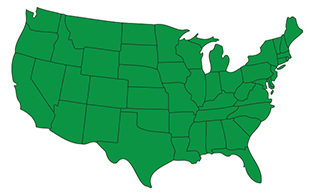
May/June Beetle
Phyllophaga spp.
The May/June Beetle is a fairly large lawn pest that can be found in many different kinds of turf grasses throughout all parts of North America. Also known as Phyllophaga spp., the grub stage of this lawn-damaging insect draws predators who can also damage lawns.
Identify

Grubs

Sub Surface
An adult May/June Beetle is best described as often covered in hairs, medium to large in size and brownish-red in color. May/June Beetle grubs have a distinct V- or Y-shaped anal slit and two parallel rows of hairs on the raster, the key identifying features distinguishing May/June Beetle grubs from other White Grubs. The raster pattern of these lawn pests closely resembles that of an European Chafer; however, the two rows of hair do not diverge from one another as in the Chafer. Compared to other White Grubs, May/June Beetle larvae are also much larger. Signs of May/June Beetle damage to lawns include gradual thinning, yellowing and wilting. Scattered, irregular or dead patches of grass can also occur in lawns infested by this lawn-damaging insect. Affected areas can easily be pulled up by hand, plus animals that feed on May/June Beetle grubs can also cause damage to the grass when searching for food.
Life Cycle
The May/June Beetle has a two-year life cycle.

Control
There are two methods for controlling May/June Beetles that TruGreen® recommends: 1. Use professionally applied pest control designed to prevent excess lawn pest populations, which can cause damage to your lawn 2. Kill insects, grubs and other lawn pests before they have a chance to damage your lawn Proper mowing and watering techniques can also help foster a healthy lawn that's more tolerant to lawn pest attacks—plus you'll get a lawn you'll want to live on in the process.




Facebook
X
Youtube
Copy Link
Email